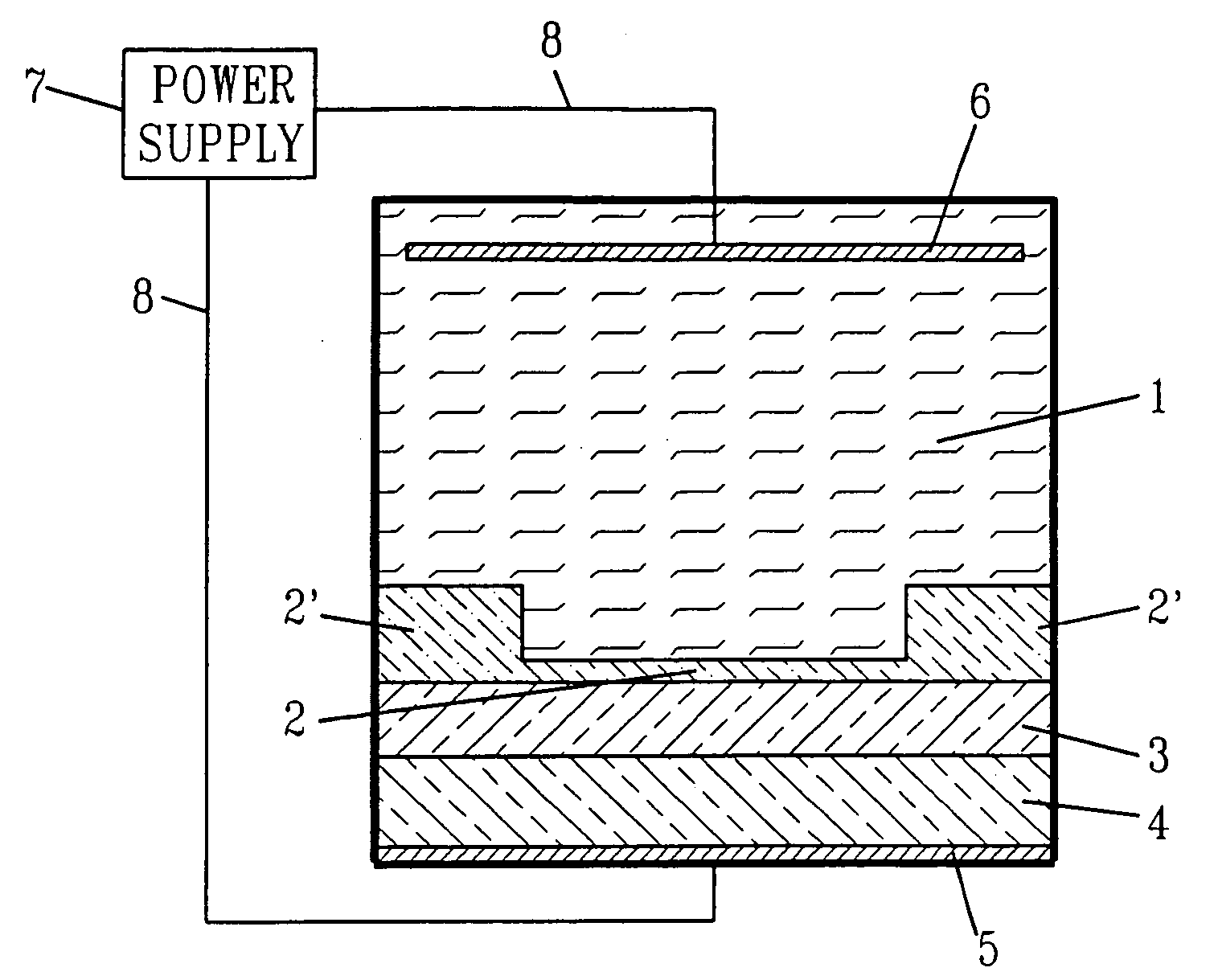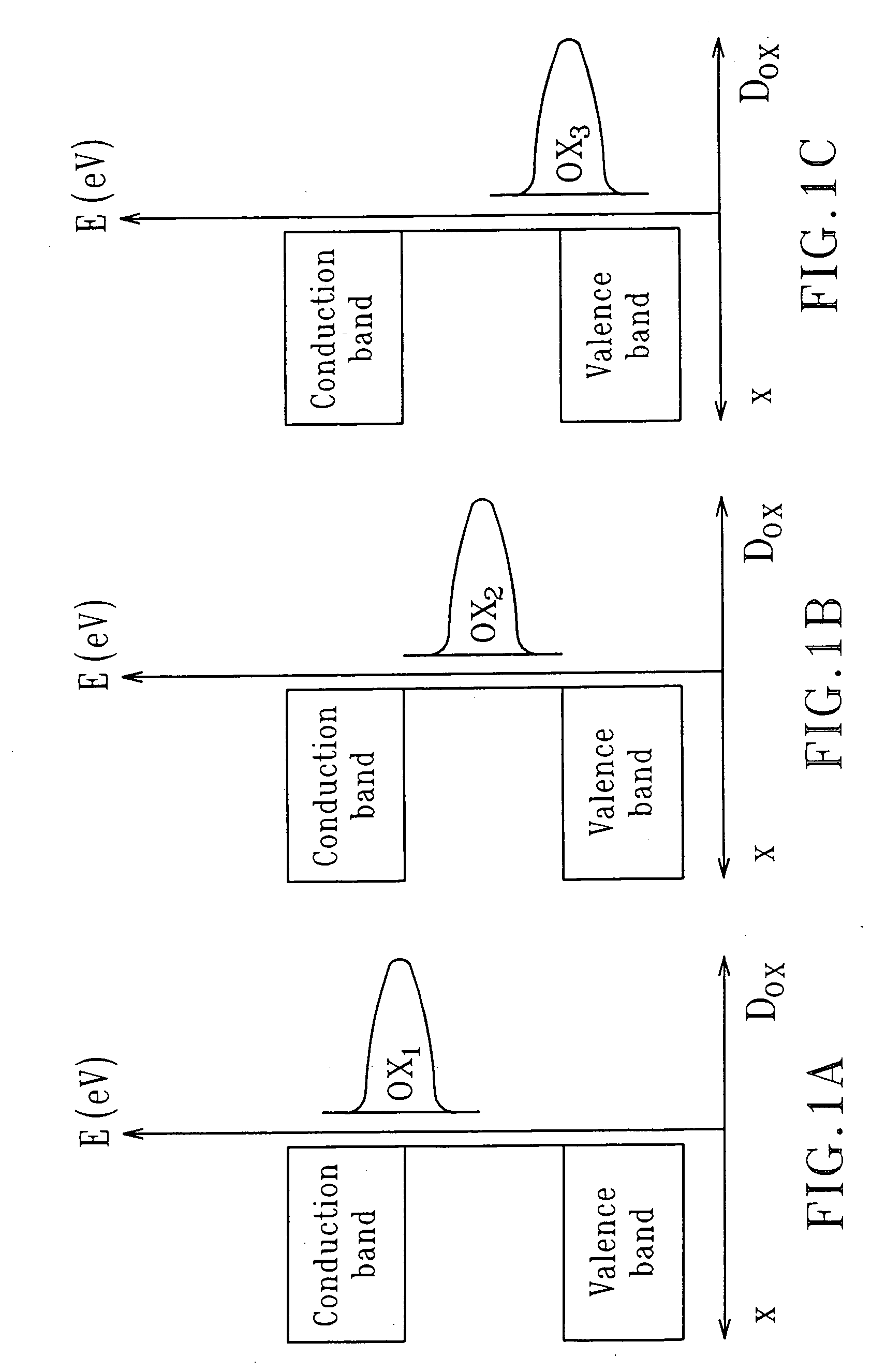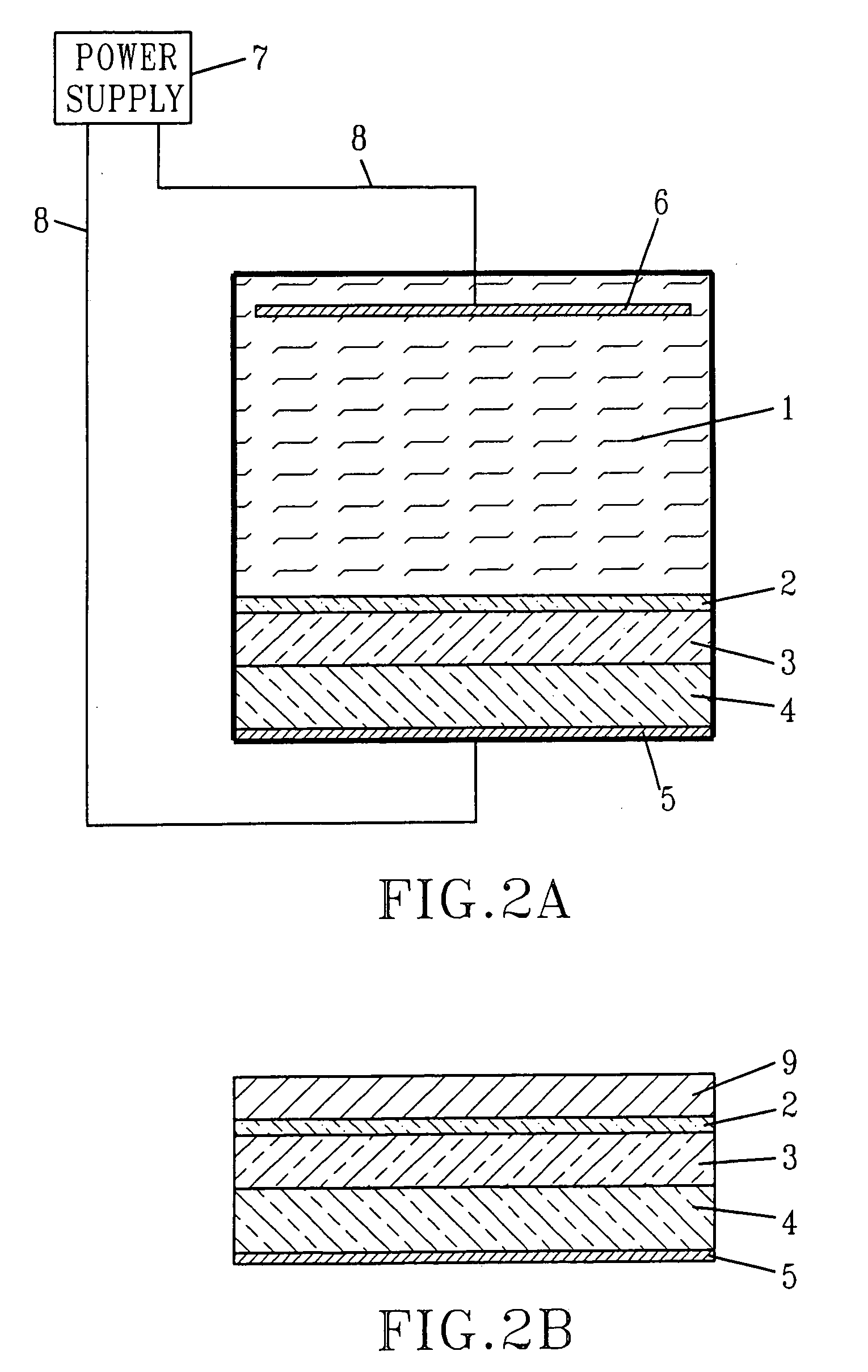Gate stack engineering by electrochemical processing utilizing through-gate-dielectric current flow
a dielectric current and gate stack technology, applied in the field of electrochemical processing, can solve the problems of no chemical modification, self-limiting formation of passive native oxides on substrates, etc., and achieve the effect of less resistan
- Summary
- Abstract
- Description
- Claims
- Application Information
AI Technical Summary
Benefits of technology
Problems solved by technology
Method used
Image
Examples
Embodiment Construction
[0043] Electrochemical processing of insulating materials or insulators can potentially occur where the insulator, typically a thin oxide coating on a metal or semiconductor, has some conductance to electrical current. For thin coatings, electron tunneling can be a primary mechanism for dielectric conductivity or current leakage which can be employed for electrochemical processing. Defects can also provide many electron states in the band gap of an insulator, and for a high density of gap states, these can also form a possible pathway for the electrical current. Conductance can also be provided by transport of charges directly through the valence or conduction band of the oxide. The latter case becomes important when working with semiconducting oxides such as TiO2, ZnO and Ta2O5, as well as any n-type wide band-gap semiconductor.
[0044] Since electroplating generally occurs in solution, the possibility of an electrochemical current at the oxide / electrolyte interface depends on sever...
PUM
| Property | Measurement | Unit |
|---|---|---|
| thickness | aaaaa | aaaaa |
| thickness | aaaaa | aaaaa |
| current density | aaaaa | aaaaa |
Abstract
Description
Claims
Application Information
 Login to View More
Login to View More - R&D
- Intellectual Property
- Life Sciences
- Materials
- Tech Scout
- Unparalleled Data Quality
- Higher Quality Content
- 60% Fewer Hallucinations
Browse by: Latest US Patents, China's latest patents, Technical Efficacy Thesaurus, Application Domain, Technology Topic, Popular Technical Reports.
© 2025 PatSnap. All rights reserved.Legal|Privacy policy|Modern Slavery Act Transparency Statement|Sitemap|About US| Contact US: help@patsnap.com



